
The Wild Heart of Africa: Serengeti National Park
Serengeti National Park: Witness the Great Migration and explore stunning landscapes teeming with wildlife in Tanzania's premier safari destination.
Serengeti National Park is a vast and breathtaking expanse located in Tanzania, East Africa. Known for its incredible wildlife, the park is most famous for the Great Migration, where millions of wildebeest, zebras, and gazelles move in search of fresh grazing. This spectacle is one of the most impressive natural events on the planet and attracts visitors from all over the world. Beyond the Great Migration, the Serengeti offers a rich tapestry of ecosystems including savannahs, woodlands, and riverine forests. Visitors can encounter the Big Five: lions, leopards, elephants, rhinos, and buffalo. Bird watchers will also be thrilled, as the park is home to over 500 bird species. The park is not just about wildlife. The Serengeti is also a place of stunning landscapes. From the endless plains to the dramatic kopjes (rocky outcrops), the scenery is as diverse as the animals. Sunsets and sunrises here are particularly magical, painting the sky with hues of orange, pink, and purple. For those seeking an authentic safari experience, the Serengeti offers various accommodations, from luxury lodges to mobile camps. Whether you're a seasoned explorer or a first-time visitor, the Serengeti provides an unforgettable adventure that connects you with nature in its purest form.
Local tips in Serengeti National Park
- Visit between June and October for the best chance to see the Great Migration.
- Book your safari in advance, especially during peak seasons, to secure the best accommodations and guides.
- Don't forget to pack a good pair of binoculars and a camera with a zoom lens for wildlife viewing.
- Consider a guided tour to learn more about the park's ecology and wildlife from experts.
- Carry sunscreen, a hat, and insect repellent to protect yourself from the sun and bugs.
The Wild Heart of Africa: Serengeti National Park
Serengeti National Park is a vast and breathtaking expanse located in Tanzania, East Africa. Known for its incredible wildlife, the park is most famous for the Great Migration, where millions of wildebeest, zebras, and gazelles move in search of fresh grazing. This spectacle is one of the most impressive natural events on the planet and attracts visitors from all over the world. Beyond the Great Migration, the Serengeti offers a rich tapestry of ecosystems including savannahs, woodlands, and riverine forests. Visitors can encounter the Big Five: lions, leopards, elephants, rhinos, and buffalo. Bird watchers will also be thrilled, as the park is home to over 500 bird species. The park is not just about wildlife. The Serengeti is also a place of stunning landscapes. From the endless plains to the dramatic kopjes (rocky outcrops), the scenery is as diverse as the animals. Sunsets and sunrises here are particularly magical, painting the sky with hues of orange, pink, and purple. For those seeking an authentic safari experience, the Serengeti offers various accommodations, from luxury lodges to mobile camps. Whether you're a seasoned explorer or a first-time visitor, the Serengeti provides an unforgettable adventure that connects you with nature in its purest form.
When is the best time to go to Serengeti National Park?
Iconic landmarks you can’t miss
Four Seasons Safari Lodge Serengeti
Experience unparalleled luxury and breathtaking wildlife at Four Seasons Safari Lodge Serengeti, a haven for adventure and relaxation in the heart of Africa.

Ndabaka Gate
Experience the perfect blend of comfort and nature at Ndabaka Gate, a tranquil gateway to Tanzania's stunning landscapes and wildlife.

Serengeti Safari Lodge
Discover the breathtaking wildlife and landscapes of Serengeti National Park while staying at the tranquil Serengeti Safari Lodge, your ultimate safari retreat.

Kirawira Serena Camp
Discover luxury and adventure at Kirawira Serena Camp in the heart of Serengeti National Park, where the wild meets elegance.

Nyikani Camp - Central Serengeti
Discover the beauty of the Serengeti at Nyikani Camp, a luxurious retreat for unforgettable safari adventures and breathtaking wildlife encounters.

Osero Serengeti Tented Camp
Experience the thrill of the Serengeti at Osero Serengeti Tented Camp, where adventure meets comfort in Tanzania's iconic wildlife sanctuary.

andBeyond Klein's Camp
Discover luxury and adventure at andBeyond Klein's Camp in the heart of Serengeti National Park, where wildlife encounters and stunning landscapes await.

Moru Kopjes
Explore Moru Kopjes, the stunning rock formations of Tanzania's Serengeti National Park, where wildlife encounters and breathtaking views await.

Singita Faru Faru Lodge
Discover luxury and adventure at Singita Faru Faru Lodge in Tanzania's Serengeti National Park, where nature and elegance meet.

Siringit Serengeti Camp
Experience the majesty of the Serengeti at Siringit Serengeti Camp, where luxury meets extraordinary wildlife adventures.

Unmissable attractions to see
Kubu Kubu Tented Lodge
Discover the luxurious charm of Kubu Kubu Tented Lodge, your gateway to the stunning Serengeti National Park and an unforgettable wildlife experience.

Serengeti Park
Explore the incredible Serengeti Park, a UNESCO World Heritage Site known for its rich wildlife, stunning landscapes, and the unforgettable Great Migration.

serengeti wildebeest camp
Experience the thrill of the Serengeti at Wildebeest Camp, where adventure meets comfort in Tanzania's breathtaking wilderness.

Africa Safari Serengeti Ikoma
Explore the majestic wildlife of Africa at Serengeti Ikoma, a premier safari park offering breathtaking views and unforgettable adventures.

Nyamoyo tours and safaris
Discover the wildlife wonders of Tanzania at Nyamoyo Tours and Safaris, where adventure and nature converge in breathtaking landscapes.

Maasai Kopjes
Discover the breathtaking Maasai Kopjes in Serengeti, a stunning natural landmark enriched with wildlife and cultural heritage.

Cheeky Monkey Safaris & Tours: The Best Tanzania Serengeti Safari; Kilimanjaro Trekking; & Zanzibar Tour Operating Company
Explore the best of Tanzania with Cheeky Monkey Safaris & Tours—where adventure meets unforgettable experiences in the Serengeti, Kilimanjaro, and Zanzibar.

SERENGETI ADVENTURE SAFARIS
Discover the breathtaking wildlife and thrilling adventures at Serengeti Adventure Safaris in Zanzibar, offering unforgettable experiences in nature.

Kiliserengoro Tours: Best Tanzania safari tour operator | Serengeti migration | Kilimanjaro climbing company in Arusha
Discover the beauty of Tanzania with Kiliserengoro Tours, your premier choice for unforgettable safari adventures and Kilimanjaro climbing experiences.

Waresa Tours & Safari - Tanzania Safari | Mount Kilimanjaro | Serengeti | Ngorongoro | Zanzibar
Discover Tanzania's majestic landscapes and vibrant wildlife with Waresa Tours & Safari, your gateway to unforgettable adventures in the heart of Africa.

Serengeti Sojourn
Discover the untamed beauty of the Serengeti with a luxurious stay at the mobile camp, where adventure meets comfort in Tanzania's prime wildlife haven.

Tanzania Serengeti Adventure Ltd
Experience the breathtaking Serengeti with Tanzania Serengeti Adventure Ltd, where wildlife and stunning landscapes come together for an unforgettable journey.

Ente Tour Oparetoris
Explore the wonders of Tanzania with Ente Tour Operators, your premier gateway to unforgettable safaris and cultural adventures.

Essential places to dine
Serengeti Serena Safari Lodge
Immerse yourself in luxury and adventure at Serengeti Serena Safari Lodge, your gateway to unforgettable wildlife experiences in Tanzania's breathtaking Serengeti.

Serengeti Safari Lodge
Discover luxury and adventure at Serengeti Safari Lodge - your gateway to unforgettable wildlife experiences in Tanzania's iconic Serengeti National Park.

Tortilis Camp
Experience luxury in nature at Tortilis Camp in Serengeti – where comfort meets adventure amidst breathtaking landscapes.

Serengeti Tanzania Bush Camp
Discover unparalleled wildlife experiences at Serengeti Tanzania Bush Camp, where adventure meets comfort in Africa's most famous national park.
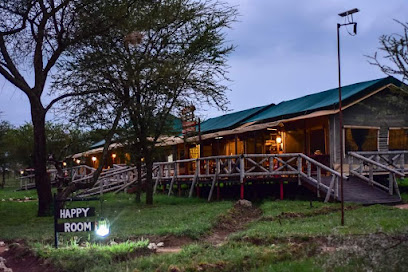
Boma
Savor authentic Tanzanian cuisine at Boma in Four Seasons Hotel Serengeti amidst breathtaking views and cultural richness.
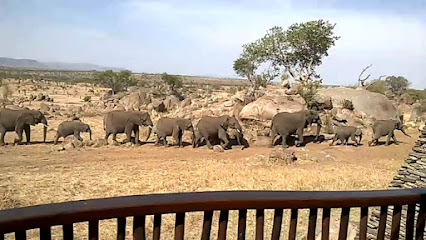
andBeyond Serengeti Under Canvas
Discover unparalleled luxury amidst the wilderness at andBeyond Serengeti Under Canvas - where adventure meets comfort in Tanzania's iconic Serengeti National Park.

Nejos Pub
Experience the vibrant nightlife at Nejos Pub in Mugumu - where locals meet travelers over refreshing drinks.

Impala And Rhino Restaurant
Discover the rich flavors of Tanzania at Impala And Rhino Restaurant in Seronera – where every meal is an adventure amidst stunning natural beauty.

Markets, malls and hidden boutiques
Serengeti National Park
Explore the breathtaking landscapes and incredible wildlife of Serengeti National Park, a UNESCO World Heritage Site and safari paradise in Tanzania.

Rock City Mall
Explore Rock City Mall in Mwanza for an unforgettable shopping and dining experience amidst modern architecture and vibrant culture.
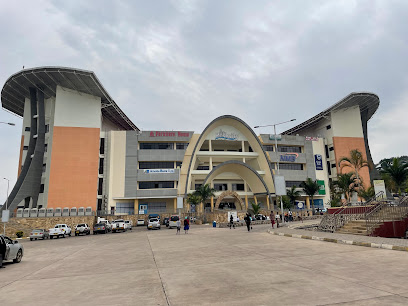
AIM Mall
Explore AIM Mall in Arusha for a unique shopping experience showcasing local culture, diverse dining, and entertainment options.

Serengeti Visitor's Centre
Explore the Serengeti Visitor's Centre for essential insights into one of Africa's most iconic wildlife destinations and prepare for an unforgettable adventure.

African Galleria
Explore authentic Tanzanian souvenirs at African Galleria, a vibrant store in Usangi showcasing local crafts and unique gifts.

Ngorongoro Entrance Gate
Explore the breathtaking landscapes and wildlife of the Ngorongoro Crater at the iconic Ngorongoro Entrance Gate.

Memories Of Zanzibar
Explore the rich culture of Zanzibar at Memories of Zanzibar, the ultimate souvenir store for unique and handcrafted treasures.

Meliá Serengeti Lodge member of Meliá Collection
Discover the perfect blend of luxury and adventure at Meliá Serengeti Lodge, your gateway to the incredible Serengeti National Park.

Sable Square Shopping Village
Explore Sable Square Shopping Village in Arusha for an unforgettable shopping experience with local crafts, international brands, and delicious cuisine.
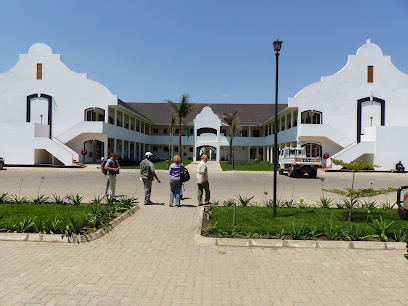
Serengeti Sopa Lodge
Experience the wild beauty of the Serengeti at Serengeti Sopa Lodge, where luxury meets the thrill of safari adventures.

Ndabaka Gate
Explore Ndabaka Gate, the serene gateway to Serengeti National Park, where adventure meets breathtaking natural beauty in Tanzania.

Shanga Gift & Workshop
Explore Shanga Gift & Workshop in Arusha for exquisite handmade souvenirs that support local artisans and communities.

Twiga Brewery
Discover the rich flavors of Tanzania at Twiga Brewery, the premier destination for craft beer lovers in Arusha.

Marera Village Gallery
Explore Marera Village Gallery for authentic Tanzanian souvenirs that capture the essence of local culture and artistry.

Seronera Wildlife Lodge
Experience the heart of the Serengeti at Seronera Wildlife Lodge, where luxury meets wildlife adventure in Tanzania's breathtaking landscapes.

Essential bars & hidden hideouts
George's Tavern
Experience the vibrant flavors of Tanzania at George's Tavern, a culinary hub in Arusha combining local dishes and a welcoming atmosphere.

Serengeti Serena Safari Lodge
Discover luxury in the heart of the Serengeti at Serengeti Serena Safari Lodge, where wildlife adventure meets elegant comfort.

Four Seasons Safari Lodge Serengeti
Discover unparalleled luxury and wildlife experiences at Four Seasons Safari Lodge Serengeti, your gateway to the heart of Africa's stunning landscapes.

Meliá Serengeti Lodge member of Meliá Collection
Discover the unparalleled luxury and adventure at Meliá Serengeti Lodge, your gateway to the wonders of Serengeti National Park.

Serengeti Sopa Lodge
Experience the thrill of the Serengeti at Serengeti Sopa Lodge, where luxury meets the wild in Tanzania's premier wildlife destination.

Kajibange BAR & Guest House
Discover the vibrant atmosphere of Kajibange BAR & Guest House, where local culture meets island relaxation in Nungwi, Zanzibar.

Sound of Silence
Experience the tranquility of Sound of Silence Lodge in the heart of Serengeti National Park, where wildlife and luxury meet in harmony.

Serengeti Pub, Singida, Tanzania
Discover Serengeti Pub, a vibrant hub in Singida, Tanzania, where local culture meets friendly conversation in an inviting atmosphere.

Serengeti Safari Lodge
Explore the enchanting Serengeti National Park from the luxurious Serengeti Safari Lodge, where adventure meets comfort in the heart of nature.

Twiga Brewery
Discover the vibrant craft beer scene at Twiga Brewery, where local flavors and a lively atmosphere come together in Arusha.

Tortilis Camp
Discover the luxury of Tortilis Camp, an eco-friendly retreat in the heart of Serengeti National Park, surrounded by breathtaking wildlife and nature.

Singita Sasakwa Lodge
Immerse yourself in unparalleled luxury and breathtaking wildlife at Singita Sasakwa Lodge in the heart of Serengeti National Park.

Serengeti Tanzania Bush Camp
Discover an unforgettable dining and lodging experience in the heart of the Serengeti at Tanzania Bush Camp, surrounded by nature and wildlife.
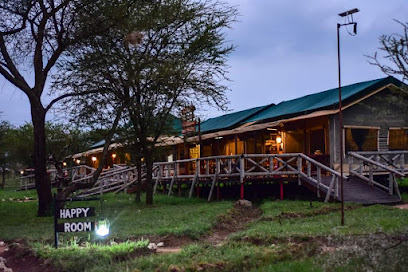
andBeyond Grumeti Serengeti River Lodge
Discover the perfect blend of luxury and wilderness at andBeyond Grumeti Serengeti River Lodge, an unforgettable retreat in the heart of Tanzania's Serengeti National Park.

Kirawira Serena Camp
Discover the luxurious Kirawira Serena Camp, a serene oasis in the heart of Serengeti National Park, perfect for wildlife enthusiasts and nature lovers.

Local Phrases about Serengeti National Park
-
- HelloJambo
[jahm-boh] - GoodbyeKwaheri
[kwah-heh-ree] - YesNdio
[n-dee-oh] - NoHapana
[hah-pah-nah] - Please/You're welcomeTafadhali
[tah-fah-dah-lee] - Thank youAsante
[ah-sahn-teh] - Excuse me/SorrySamahani
[sah-mah-hah-nee] - How are you?U hali gani?
[oo hah-lee gah-nee] - Fine. And you?Salama. Na wewe?
[sah-lah-mah. nah weh-weh] - Do you speak English?Unasema Kiingereza?
[oo-nah-seh-mah kee-een-geh-reh-zah] - I don't understandSielewi
[see-eh-leh-wee]
- HelloJambo
-
- I'd like to see the menu, pleaseNingependa kuona menyu, tafadhali
[nee-ngeh-pehn-dah kwoh-nah meh-nyoo, tah-fah-dah-lee] - I don't eat meatSili nyama
[see-lee nyah-mah] - Cheers!Kwa afya!
[kwah ahf-yah] - I would like to pay, pleaseNingependa kulipa, tafadhali
[nee-ngeh-pehn-dah koo-lee-pah, tah-fah-dah-lee]
- I'd like to see the menu, pleaseNingependa kuona menyu, tafadhali
-
- Help!Msaada!
[msah-ah-dah] - Go away!Nenda zako!
[nen-dah zah-koh] - Call the Police!Piga simu polisi!
[pee-gah see-moo poh-lee-see] - Call a doctor!Piga simu daktari!
[pee-gah see-moo dahk-tah-ree] - I'm lostNimepotea
[nee-meh-poh-teh-ah] - I'm illNinaumwa
[nee-nah-oom-wah]
- Help!Msaada!
-
- I'd like to buy...Ningependa kununua...
[nee-ngeh-pehn-dah koo-noo-noo-ah] - I'm just lookingNinatazama tu
[nee-nah-tah-zah-mah too] - How much is it?Ni bei gani?
[nee beh-ee gah-nee] - That's too expensiveHiyo ni ghali mno
[hee-yoh nee gah-lee m-noh] - Can you lower the price?Unaweza kupunguza bei?
[oo-nah-weh-zah koo-poon-goo-zah beh-ee]
- I'd like to buy...Ningependa kununua...
-
- What time is it?Saa ngapi?
[sah ah-ngah-pee] - It's one o'clockNi saa moja
[nee sah moh-jah] - Half past (10)Saa moja na nusu
[sah moh-jah nah noo-soo] - MorningAsubuhi
[ah-soo-boo-hee] - AfternoonMchana
[m-chah-nah] - EveningJioni
[joh-nee] - YesterdayJana
[jah-nah] - TodayLeo
[leh-oh] - TomorrowKesho
[keh-shoh] - 1Moja
[moh-jah] - 2Mbili
[m-bee-lee] - 3Tatu
[tah-too] - 4Nne
[nn-neh] - 5Tano
[tah-noh] - 6Sita
[see-tah] - 7Saba
[sah-bah] - 8Nane
[nah-neh] - 9Tisa
[tee-sah] - 10Kumi
[koo-mee]
- What time is it?Saa ngapi?
-
- Where's a/the...?Iko wapi...?
[ee-koh wah-pee] - What's the address?Anwani ni gani?
[ahn-wah-nee nee gah-nee] - Can you show me (on the map)?Unaweza kunionyesha (kwenye ramani)?
[oo-nah-weh-zah koo-nee-oh-nyeh-shah (kweh-neh rah-mah-nee)] - When's the next (bus)?Basi lifuataje?
[bah-see lee-foo-ah-tah-jeh] - A ticket (to ....)Tiketi (kwenda ...)
[tee-keh-tee (kwehn-dah)]
- Where's a/the...?Iko wapi...?
History of Serengeti National Park
-
The Serengeti ecosystem, one of the oldest on earth, dates back millions of years. The region's geological formations began during the Precambrian era, characterized by volcanic activity and tectonic shifts. This created the rich soil and diverse landscape we see today, enabling a vast array of flora and fauna to thrive.
-
For centuries, the Serengeti has been home to indigenous tribes such as the Maasai, who have lived in harmony with the land and its wildlife. The Maasai's migratory patterns mirrored those of the wildebeest and other wildlife, and they developed a deep understanding of the ecosystem's rhythms.
-
In the late 19th century, European explorers like Oscar Baumann and Gustav Fischer ventured into the Serengeti region. Their reports attracted further interest, leading to increased colonial influence. The British colonial government later managed the region, imposing new land use regulations and introducing modern infrastructure.
-
Serengeti National Park was officially established in 1951, following concerns about the impact of human activities on the wildlife. Initially, the park covered 14,763 square kilometers, but it has since expanded. The establishment marked a significant step in conservation efforts, aiming to protect the unique biodiversity of the region.
-
One of the most remarkable natural events globally, the Great Wildebeest Migration involves over 1.5 million wildebeest, along with hundreds of thousands of zebras and gazelles. This annual migration, driven by rainfall patterns, sees these animals travel over 1,800 miles from Tanzania to Kenya and back, ensuring the survival of many species.
-
In 1981, Serengeti National Park was designated a UNESCO World Heritage Site due to its outstanding universal value. The recognition highlighted the park's ecological significance and the need for continued conservation efforts to maintain its unique landscapes and biodiversity.
-
Despite its protected status, Serengeti National Park faces numerous modern conservation challenges, including poaching, human-wildlife conflict, and climate change. Various organizations and government bodies continue to work tirelessly to address these issues and ensure the park's long-term sustainability.
Serengeti National Park Essentials
-
Serengeti National Park is located in northern Tanzania. The nearest international airport is Kilimanjaro International Airport (JRO), approximately 325 kilometers away. From the airport, you can take a domestic flight to Seronera Airstrip, which is centrally located within the park. Alternatively, you can fly into Arusha Airport (ARK) and take a road transfer to the park, which typically takes around 7 to 8 hours by road. Many tour operators offer guided safaris that include transportation from Arusha or Kilimanjaro to the park.
-
Within Serengeti National Park, transportation options are limited to guided safari vehicles. It is recommended to book a guided safari tour, as self-driving is not advisable due to the rugged terrain and the presence of wildlife. Most lodges and camps offer game drives as part of their packages. For those who wish to explore other parts of Tanzania, car rentals are available in Arusha and major cities, but ensure you have a 4x4 vehicle for navigating rough roads.
-
The official currency in Tanzania is the Tanzanian Shilling (TZS). Credit cards are accepted in most lodges, camps, and larger establishments, but it is advisable to carry cash for smaller transactions, tips, and purchases in remote areas. ATMs are available in Arusha and other major towns, but not within Serengeti National Park itself. It is recommended to withdraw sufficient cash before entering the park.
-
Serengeti National Park is generally safe for tourists, but it is important to follow the guidelines provided by your tour operator and lodge. Avoid walking alone at night and always stay within designated areas. Be cautious of wildlife and never approach animals. While crime rates within the park are low, be vigilant with your belongings in airports and urban areas such as Arusha or Mwanza, which have higher crime rates targeting tourists.
-
In case of emergency, contact your lodge or tour operator immediately. They are equipped to handle most situations and have communication links with medical facilities and authorities. The nearest major hospitals are in Arusha and Mwanza. For medical emergencies, Flying Doctors services can be arranged. It is highly recommended to have travel insurance that covers medical evacuation. The emergency contact number in Tanzania is 112.
-
Fashion: Do dress in neutral-colored clothing suitable for safaris. Avoid bright colors and camouflage patterns. Religion: Do respect local customs and traditions. If visiting nearby villages or towns, dress modestly. Public Transport: Do use organized transportation within the park. Public transport options outside the park include buses and minibuses, but they can be crowded and less reliable. Greetings: Do greet people with a handshake and a smile. Learning a few Swahili phrases such as 'Jambo' (Hello) can be appreciated. Eating & Drinking: Do try local dishes such as Ugali and Nyama Choma. Don't drink tap water; always use bottled or purified water.
-
To experience Serengeti National Park like a local, consider visiting during the low season (April to May) for fewer crowds and more intimate wildlife encounters. Engage with your guides and lodge staff, as they possess a wealth of knowledge about the area. Participate in a cultural visit to a nearby Maasai village to learn about their traditions and way of life. For a unique experience, consider a hot air balloon safari at dawn to view the park from above.
Nearby Cities to Serengeti National Park
-
Things To Do in Arusha
-
Things To Do in Kisumu
-
Things To Do in Nairobi
-
Things To Do in Naivasha
-
Things To Do in Nakuru
-
Things To Do in Singida
-
Things To Do in Moshi
-
Things To Do in Eldoret
-
Things To Do in Bukoba
-
Things To Do in Jinja
-
Things To Do in Kitale
-
Things To Do in Entebbe
-
Things To Do in Tabora
-
Things To Do in Mbale
-
Things To Do in Kampala













